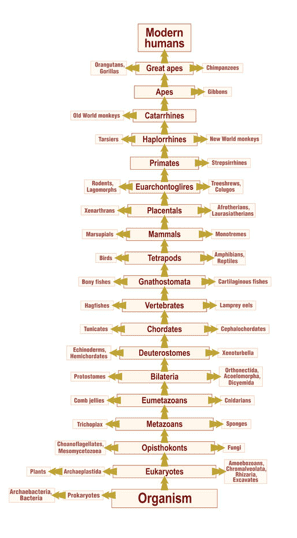In this post
A living organism is any living system. All living organisms comprise of cells. Some organisms are composed of just a single cell (unicellular organisms), whereas others (like humans, animals, plants and some fungi) are made up of millions of cells and are therefore known as multicellular.
There are a number of different living organisms which are classified according to their characteristics. These are known as the five kingdoms of life:
- Animals (including humans)
- Plants
- Fungi
- Protoctists
- Bacteria
These organisms contain different types of cells that are specialised to carry out certain functions according to the specific organism they compose.

Although made up of different cells, all living organisms share some common characteristics known as the eight life processes:
- Nutrition
- Respiration
- Excretion
- Growth and development
- Reproduction
- Movement
- Sensitivity
- Control
We will go over these processes individually and in more detail in the next chapter.
The characteristics of living organisms
In order to survive, living organisms require nutrition. This means that they take in and use food. Humans are a common example of this; when we feel hungry, we eat. However, plants are a living organism that have the ability to make their own food through a process known as photosynthesis (we will go into detail about this process in Topic 2 of this course).
No matter where the nutrition is gained, living organisms go through a process known as respiration. In biology, respiration does not refer to ‘breathing’ but involves the extraction of energy from the food an organism obtains (the process of breathing is called ventilation). In the case of animals and humans, energy is extracted from food that has been broken down in the digestive system, which is then absorbed by cells. Respiration occurs in the mitochondria of a cell (more about this organelle later in the course). There are two types of respiration. Aerobic respiration is the form that requires oxygen and anaerobic respiration is the form which does not require oxygen. The extraction of energy allows for growth and development in the cell.
Any nutrients or particles that the organism does not require must be excreted. Excretion is the disposal of any toxic waste products. All living things produce waste products that are either toxic to them or can sometimes even be harmful. For example, humans and animals excrete carbon dioxide when they exhale (breathe out) and other waste products left over from food through the digestive system.
A living organism must have the ability of movement. This includes the action of muscle movements in animals and humans; without this ability they would fail to be able to search for the nutrients that they require. However, when we speak about movement, we also refer to the slow growth movements in plants.
In addition, growth and development is another key life process which all living organisms require. All living organisms grow and develop. They increase in size or mass using the energy respired from their food. Whereas plants continue to grow throughout their lives, humans and animals stop growing once they reach adulthood; however, the cells inside their bodies are continuingly developing and being replaced.
Without the ability to reproduce, all living organisms would cease to exist. All living organisms produce offspring so that their species can survive and evolve. There are two types of reproduction: sexual reproduction (involving two parents) and asexual reproduction (only requiring one parent).
Living organisms are sensitive to any changes that occur in their surroundings. They respond to stimuli, such as light, heat, sound, touch etc. As they respond easily to stimuli, it is important that they are able to control their internal conditions – this is known as homeostasis.

The variety of living organisms
There is an abundance of living organisms; some we see on a daily basis and others are so small that they can only be seen using a microscope. There are five kingdoms of living organisms; these are animals, plants, fungi, protoctists and bacteria. The biggest division between the cells of these organisms is if they are eukaryotic or prokaryotic.
Eukaryotic organisms include:
- Animals
- Plants
- Fungi
- Protoctists
Prokaryotic organisms include:
- Bacteria (such as E. coli)
The primary difference between these two types of organisms is that the cells of a eukaryotic organism contain DNA inside a nucleus; whereas the cells of prokaryotic organisms do not have a nucleus and instead the DNA is contained in the cell’s cytoplasm.
To distinguish further between these different types of organisms, scientists have created a way of ‘classifying’ living organisms according to common structures and functions that they share. In other words, living organisms are classified into their different species. These structures and functions have occurred because of a common ancestor that has been shared in the past.
This mode of classification has led to there being more than ten million species of organisms currently known to be alive on the Earth today.




